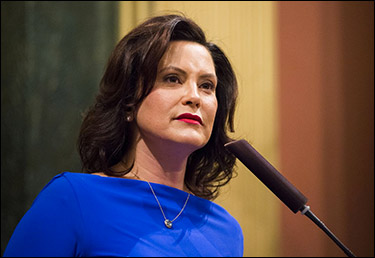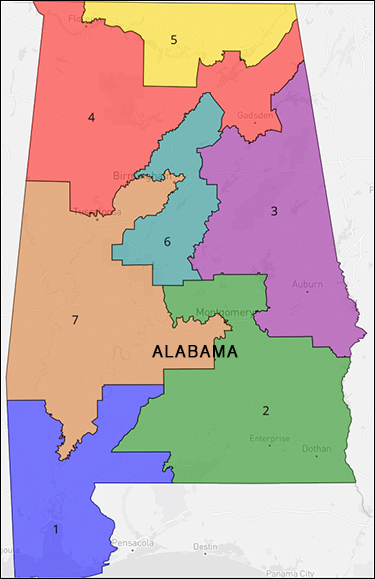By Jim Ellis
April 22, 2022 — Major party candidate filing has now closed in the Wolverine State, and we see some highly competitive contests forming for November.With no senator on the 2022 ballot, the governor’s race tops the ballot. No fewer than 10 Republicans filed in an attempt to oppose Gov. Gretchen Whitmer (D) in the November election. The governor drew no Democratic opposition for the Aug. 2 state primary.
The leading GOP contender appears to be former Detroit Police Chief James Craig, but he must first secure the Republican nomination.
Within the large field, he can expect competition at least from chiropractor and well-known anti-lockdown activist Garrett Soldano, former Berrien County Commissioner and ex-state police captain Mike Brown, and online talk show host Tudor Dixon. The general election yields a race that promises to be one of the top campaigns in the country and polling suggests that the projected Whitmer-Craig contest is already a toss-up.
We will also see serious November competition in most of the state’s 13 congressional districts on a map the Michigan Independent Citizens Redistricting Commission members purposefully drew to feature the maximum number of tight political districts.
In two contests, the major party general election pairings are already set. First District US Rep. Jack Bergman (R-Watersmeet/ Upper Peninsula) must subdue a challenge from Marquette County Medical Director Bob Lorinser (D). In an R+24 district, according to the FiveThirtyEight data organization, where the congressman exceeded 61 percent of the vote in 2020, Rep. Bergman becomes a prohibitive favorite for re-election in November.
What began as an incumbent pairing between Reps. Bill Huizenga (R-Holland) and Fred Upton (R-St. Joseph) because the state lost a seat in national reapportionment, is now a general election that will produce little in the way of political suspense.
With Upton recently announcing his retirement and state Rep. Steve Carra (R-Kalamazoo) deciding to exit the congressional race and seek re-election to his current position, those moves have surprisingly left Rep. Huizenga unopposed for re-nomination in the new 4th CD. His general election opponent will be retail banker Joseph Alfonso (D) in a race that should offer only minimal competition for the six-term incumbent.
Reps. John Moolenaar (R-Midland), Tim Walberg (R-Tipton), Debbie Dingell (D-Dearborn), and Lisa McClain (R-Bruce) face little in the way of competition for both re-nomination and re-election. Rep. Dingell, however, is placed in a new 6th District that contains 44 percent new territory and is without the family’s home base of Dearborn. A member of the Dingell family has represented Dearborn as a part of their district in Congress consecutively since 1933.
Freshman Rep. Peter Meijer (R-Grand Rapids) received one of the tougher draws on the new map. His 3rd District, while still anchored in Grand Rapids, moves from an R+9 rating to D+3. He first must secure re-nomination over former Trump Administration official John Gibbs and attorney Gabi Manolache. Meijer then will again face his 2020 opponent, Democratic attorney Hillary Scholten, who held him to a 53-47 percent victory in the more Republican 3rd District version. The new 3rd contains 50 percent new territory for the congressman, including the Democratic city of Muskegon.
Even though Rep. Elissa Slotkin (D-Holly/Lansing) loses her home base, finds herself in a district with 38 percent new territory, and must compete in an R+7 new 7th District, she actually gains a political point when compared to the current 8th District that she now represents. Still, winning re-election with just a 51-47 percent spread and facing tougher Republican competition from state Sen. Tom Barrett (R-Lansing) means this race will become a top GOP national target.






